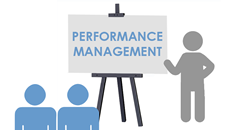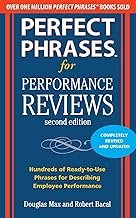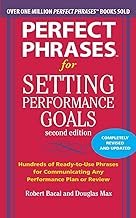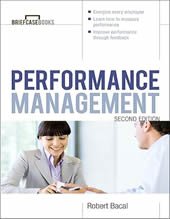Rethinking Employee Performance - More Complex Than You Think
Common sense tells us that if an employee does his or her job tasks well, he or she is “performing well.” If an employee doesn’t do the job tasks well, then she or he is a “poor performer.”
Well, that may be the perception of many, but it’s way too simplistic. While you can equate performance with doing the tasks of the job, let’s look at it a bit differently.
An employee is performing well when his or her actions and behaviors contribute to the goals of the company and the work unit. In this respect, we aren’t looking at work performance as we would look at an athlete’s performance in, for example, running the mile. We evaluate the runner’s performance by looking at how long he took to run the mile or whether she was faster than everyone else, but we do not look at whether the running performance contributed to anything larger than the runner. At least not any more.
Performance The degree to which an employee contributes to the goals of his or her work unit and company as a result of his or her behavior and the application of skills,abilities,and knowledge.
We might have in the past. If you recall some of your ancient history, you might remember that distance runners were used so generals in war could communicate with each other, absent our current technologies. In those roles, the runners had to run fast, but running fast wasn’t the point. The point was to get messages to the generals so they could win battles.
Employees are not like modern athletes. Our main concern with work performance should not be doing well or poorly, but rather about contributing. How much does it contribute? Can it contribute better? How can we improve contributions? While the ability to do job tasks is important, performance itself is a much bigger issue. When you grasp the concept of performance as contribution, you have the opportunity to manage in a completely different way and to review performance in a way that involves partnering and working together.
An Example - Tale of Three Employees' Work Performance
Let’s look at an example that clarifies this broader view of performance.
Mary, Joan, and Mark work in a call center that handles calls from customers wanting help with a particular software product. The economics of call centers are such that employees are often evaluated on the number of customers they can deal with in a given period of time. Companies tend to view support call centers as overhead or “cost” items, since they don’t generate visible income, and they tend to understaff them.
When you start thinking about employee performance as the degree to which an employee contributes to the organization's goals, it changes everything.
Mary is the speed demon of the department. She talks fast, thinks fast, and knows her stuff. Her throughput is the highest in the department. Joan also knows her stuff, but works more slowly, thinks more slowly, talks at a more normal and natural speed. Her throughput is a little below the average. Mark is not very knowledgeable, but oddly enough he also has a fairly high throughput and customers he deals with don’t generally call back.
If we look at performance as the ability to do the primary job task (getting callers off the phone) quickly, then we’d conclude that Mary is best, Mark is second, and Joan is the least able performer, based on the average time spent on each customer call.
But what about their contributions? If we define performance as the degree to which the employee contributes to the goals of the company and work unit, we end up with a different conclusion.
The reason Mark deals with customer problems quickly and his customers don’t call back is that he’s no help at all. They don’t call back because they’ve given up on him and on the company and they’re going to be quite vocal about their dissatisfaction. He may be fast, but he’s not contributing.
Mary, on the other hand, has a lot to offer to her customers, but she is so fast and so abrupt and task-oriented that she doesn’t check that the customers understand her instructions before she ends the conversations. The result is that they often have to call back. Her speed is a double-edged sword: it cuts down on the length of calls but hurts customer service.
Joan, on the other hand, is the real performer. She solves 95% of customers’ problems on the first call and within five minutes, while presenting a very positive image of the company. She’s not just a software support consultant. She’s a public relations expert as well.
Even when you can measure employee output accurately, those measurements are not a "complete" indication of an employee's VALUE.
You can apply the same concept of performance to sports figures.
A baseball player hits 70 home runs in a season, but his team finishes last. Is he a high performer or not? It all depends on how you treat performance. If he has contributed to some goals important to the team (such as increasing attendance and revenue), then the answer is yes. If the team finished last and had a drop in attendance, it’s likely his value to the team, economically, will be negative. That situation will probably not occur in your workplace, because the reward systems are different than in baseball, but the principle is the same. We want contributors, employees who provide value to the company.




